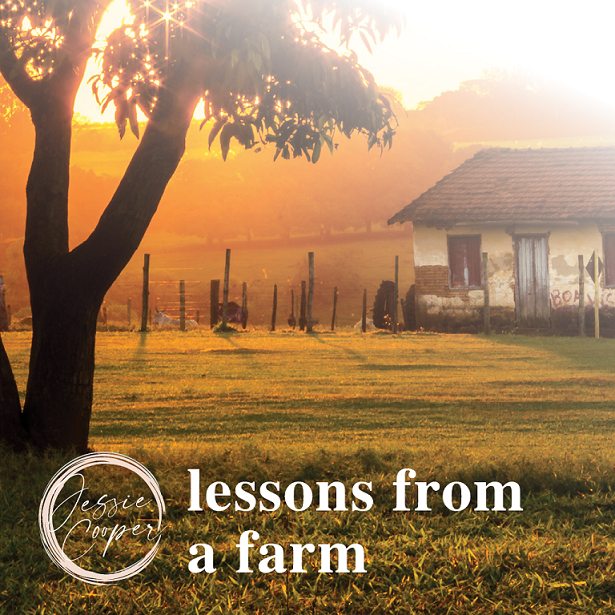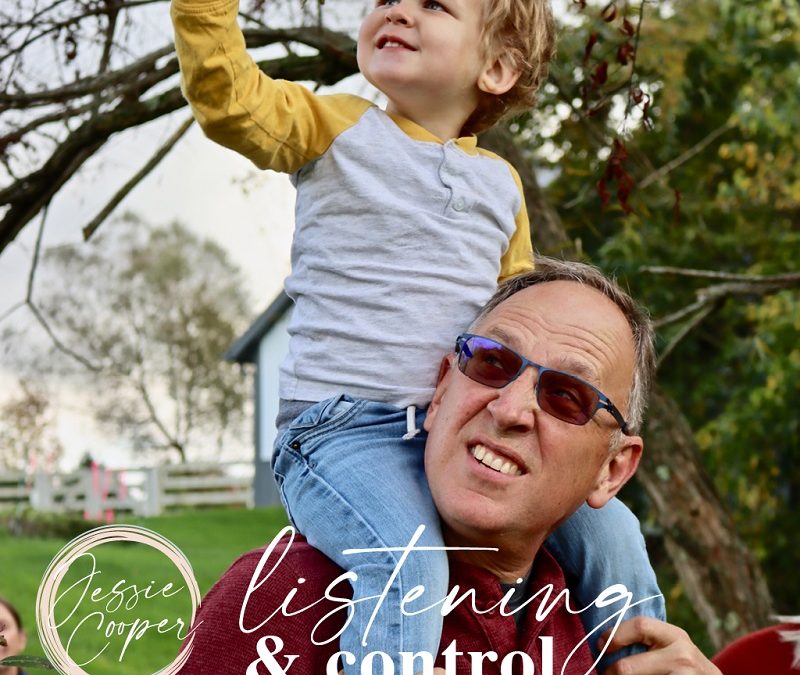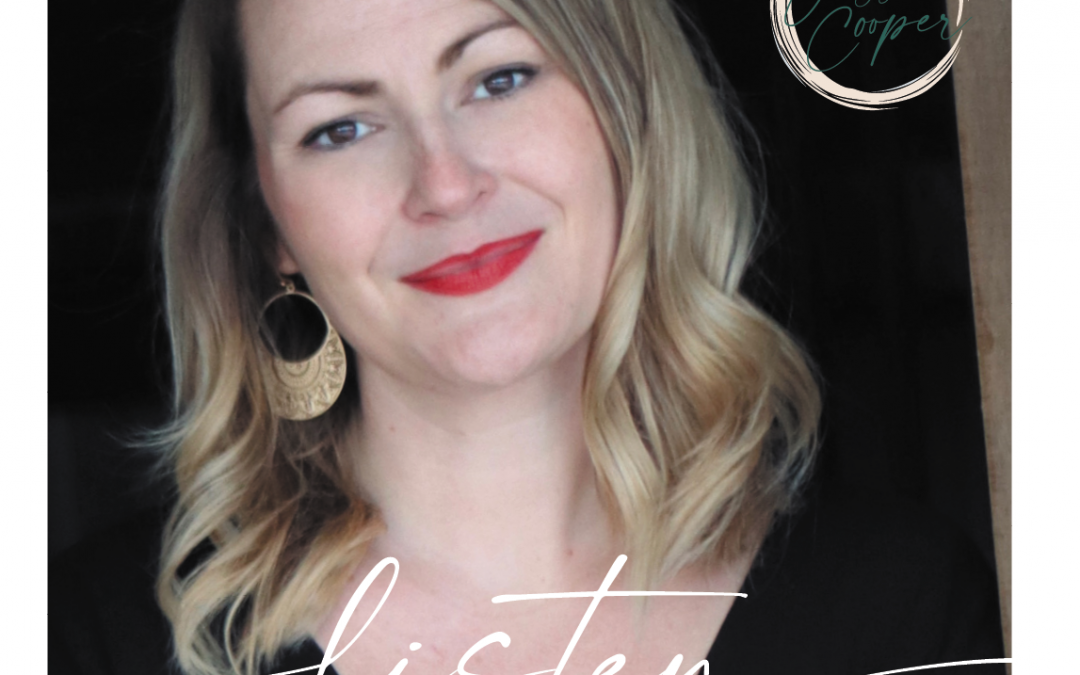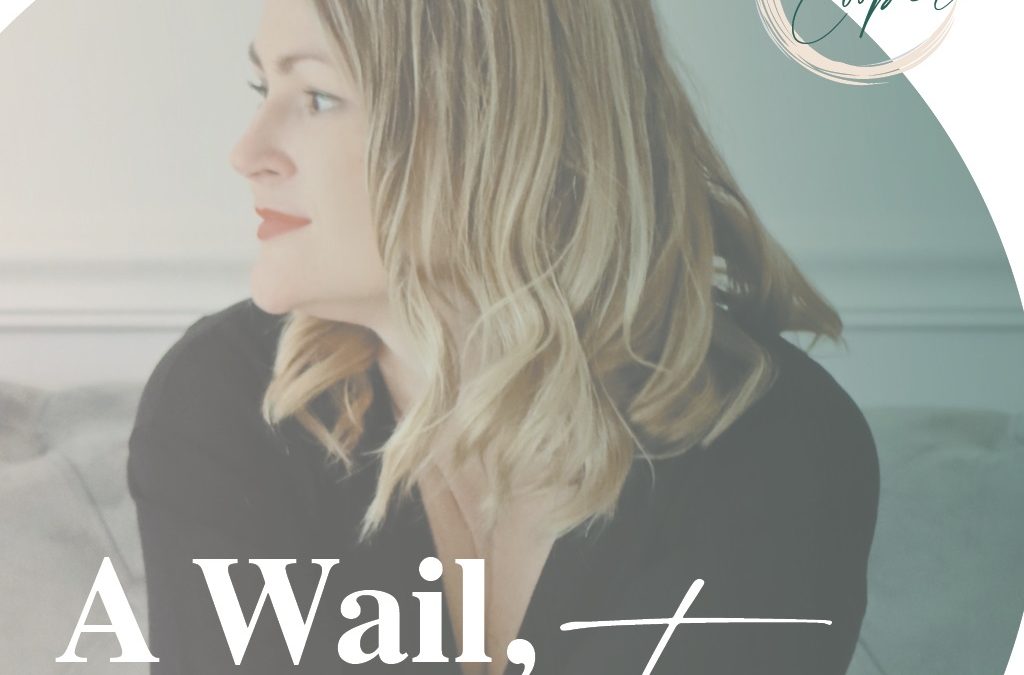
by Jessie Cooper | Sep 1, 2022
Growing up my grandparents lived on a farm in northeast Ohio about an hour from my parent’s home. During my childhood, the farm was my happy place for so many years. As a child fitting in was not my strong suit and I didn’t have the wisdom I possess now that fitting in is never the goal; belonging to our own hearts is. Whenever we visited my grandparents I felt at peace against the chaos of the world. I suppose I knew a little about belonging because on the farm I felt it.
As a child every summer my parents would take us for a week to learn and live with my grandparents. My grandma Virginia was a beautiful quilter and wanted to teach all her grandchildren to sew. Kristen, my sister, took to this quickly and to this day has a quilt rack in her office. Me? I am perfectly capable of sewing (thanks grandma) and it literally makes my stomach sick to focus on details that small. To this day I also still take my sister my mending pile.
Country Living
To escape the task of sewing I trotted at the boots of my grandpa Bob and did whatever chores he was doing. Each morning before the sun would rise we would get up and put on our “shit” boots then head down to the barn. I would pull the hose bringing water to the chickens, pigs, sheep, cows, goats, ducks, and my favorite; the cats. We would scoop food together, muck out stalls and make sure all the animals were ready for their day. After our early morning activities, my grandpa would pour me a bowl of cereal, slap it onto a metal tray, and we would watch whatever farming show was on in the morning on the shaggy carpet of their living room. Throughout the day I would drag buckets of water to my grandpa as he planted and by night we would rock on their porch swing eating popsicles made from my grandma’s grapevine.
I was in love with this life. Walking through the fields, watching the animals, nursing bottle-fed sheep in the morning, and kicking off my very important shit boots right alongside my grandpa. There was never a moment when there wasn’t something the earth needed or wanted. My grandma told me on a farm that the work is never done, it is waiting for its keeper. When summer ended we would visit the farm about twice a year to see my aunts, uncles, and cousins. Traditions of their own came with the holidays and gathering with my family, while different from me, filled me with quiet gratitude.
In the spring of 2020, my marriage was at a critical juncture and at the same time the world shut down for 12 weeks. I was at home terrified daily for my business in the first days of the pandemic and I knew in my heart that something had to change in my life. I had spent the last decade in Illinois building my business, making friendships that will last a lifetime, and becoming a mama to three beautiful boys. At the time I didn’t know my marriage would end but I did know I needed a happy place and missed my family dearly. I then did something that to this day I don’t know if it came from wisdom or fear. I bought a three-acre farm in Johnstown Ohio sight unseen in 24 hours. My children and I moved to the farm in August of 2020 and within a month I separated from my ex-husband.
Re-Discovering Life in the Country
The past two years have been nothing short of painful but they have also brought me incredible joy. I am a woman who always has to know why and to this day I’m not really sure why I’m here in Johnstown or bought the farm. The only thing I can settle into is this is our healing house. The family who built this house put such love, care, and detail into the home. Each room of the home has a detail that reminds me of beauty and each acre of the land has something new to explore. When I bought the home, I slid open their junk drawer to find a piece of paper to say thank you. Instead, I found this, “Have the Heart of A Shepherd and the Spirit of a Warrior.” It felt like my soul’s mantra and is now on a painting in my office. This home has wisdom I do not yet carry.
When I bought the farm I thought I could replicate the farm my grandparents made for our family. I imagined the 4th of July with my cousins, weekends with my aunts and uncles, and a deep gathering of family members. When I left my marriage some of my extended family turned on me claiming I was either lying about the reasons I was leaving my marriage or breaking God’s plan to follow the man in my marriage. The rest of my extended family either went silent or attacked my beautiful father for supporting his daughter.
It wasn’t the loss of my marriage that broke my heart, it was the loss of my family. It wasn’t until what felt like betrayal and grief passed that I realized I couldn’t lose what I never had. I accepted that I loved my family and they did not love me in return and that was OK. This allowed me to choose the family I deserve versus being hurt by the family I was born into. I know I’m more than the pain they attempted to bring to me and still attempt to bring by spending time with my ex-husband spinning hateful stories about me and my dad.
Farm Introspection
On the farm, I’ve learned a great many things about myself, how to be present, and how to love what is right in front of me. I have also learned that one week in the summer does not in fact give the skill sets you need to actually run a farm. Turns out I really dislike vegetable gardens, have killed my darling black raspberries, and at five Henry has a better green thumb than me with his pumpkin patch and sunflowers. It also turns out that finding time to add any animals to the farm feels like a task I’ll never have time for but something my soul is still curious for. Baby steps. This fall I’m going to take horseback riding lessons and actually take Simon, my boxer, back to obedience school instead of buying a puppy. The farm has after all taught me to pay attention to what is right in front of me.
Each day I try to find a piece of time to care for the land or the home. Some days I fail at this and some days I remember. But like my grandma said, my farm is always waiting for its keeper. Life is not what I expected it to be when I moved in night from Illinois to Ohio. There are days I still doubt where I am, what I’m doing, and if I’m making the right choices for my children. In those moments I smile gently to my soul reminding myself to bloom where I am planted
Xoxo,
Jessie Cooper

by Jessie Cooper | Sep 1, 2022
A few weeks ago I wrote to you about the power of listening to each other. This week I’d like to dive more deeply into how to navigate the multifaceted ways of listening, being listened to, or being ignored on a human level. You see, listening to others, I think, is one of my superpowers. Not being listened to is part of my shadow work and I can quickly see red become quite an unpleasant person to deal with if I don’t catch it. Basically, I have some great life experiences on both sides of listening that bring value to my life and I hope to bring value to yours.
Backing up and starting at the beginning I would love to say that listening to others is part of my nature. The truth is it would be impossible to know if I’m a good listener by nature because I watched my own dad from a young age do this across all walks of life. If you haven’t met my dad, you will know it’s his nature, because his family of origin does not possess this gift. Quite the opposite in fact. My dad owned a farm market throughout my childhood and I spent countless hours at his ankles as he met farmers, employees, and community members.
Really Listening to Others
When my dad meets a person something special happens, no matter how busy he is my dad stops what he’s doing to truly listen to how the other person is. This carried him well as a business owner but it was in his retirement I truly saw his gift for listening when he met my son Dametrius all those years ago. My dad started a community garden in the Hilltop (inner city) of Columbus to teach children to garden and provide food for the community. My son was four years old at the time and lived in the house next door. In meeting Dametrius, a young bi-racial boy without much more than the clothes on his back my dad did it again; he listened. In his listening, he found that Dametrius’s mom was sick, in listening he heard their family needed help, and from helping my son all those years ago built an incredible friendship that allowed me to become his second mom. A friendship that was not only with Dametrius but to the community of the hilltop. Each and every person on the hilltop was (and is) equal in my dad’s eyes and to this day he will give the clothes off his back to anyone in need. My dad is a walking example of the beauty that treating people equally can create and how listening creates connection.
Back to me (tada!), You can see that I had an incredible role model in listening and so when it came naturally to me I followed it. At first, I followed listening into my career and helping individuals with disabilities and autism as I’ve written to you about in the past. I’m embarrassed it wasn’t until I left my marriage that I truly started to learn to listen to my own soul. I was so fixated on helping people to repair my own wounds that I didn’t stop to listen to myself. At least not on the level that my soul truly needed.
At the time that I was divorcing both my home life and the world were falling apart with COVID. As my worlds fell apart I learned the hard way (yes mom I know) that listening isn’t a gift that everyone has much less even a desire. I was naive at the time and thought that listening to others was something everyone did just like Dad and me.
Finding Someone to Listen to You
In the months following my separation I was met with my entire extended family, lawyers, a guardian, and the legal system not listening to me. As I recanted my experience inside my marriage and the help I needed for myself and my sons, shoulder after shoulder turned away from me. For the family that I lost at first I felt betrayed, then heartbroken, and finally accepted the loss for what it was and grieved. To the lawyers, I switched to time and time again (five to be exact) until I finally found a lawyer that listened. It was through this painful process that I learned to witness the aftermath of not being listened to. Not only in outcomes but in my own reactions.
In a world that seems to be stuck in dysfunctional, and at times oppressive, systems, listening to our fellow humans is a lost art. In knowing how deeply impactful listening is, it turns out I not only see red but become a very demanding, persistent person, when I feel I am not being listened to. It was just this past week, through an experience at my son’s school, that I finally realized exactly how I slip into a controlling narrative. Turns out I become controlling when I’m not being listened to. Knowing this will help me refrain from trying to control outcomes and instead ask the simple question, “why aren’t you listening to me?”.
You see I’ve come to learn that not everything turns out the way you want it to and that control is something we (ok I) desperately want but never really had to begin with. We can’t always change the outcomes into our own perfect story or get what we want. There are billions of us on earth so I can begrudgingly put down the need to control (again, and again, and again). This would however be much simpler if we were first heard, and then were asked to put down control. In writing this I very much doubt I am the only person who struggles with control when they do not feel heard.
Being Heard
Being heard is the key because when a person is struggling, what I learned from my wise father is they have a story to tell. In that story might be a gift, a lesson, a kindness, and often is a need not met. If you spend the time listening, you can learn the needs of others, if you learn the needs of others you find that they aren’t much different than yours. That we are all more similar than different.
So how do you struggle, when are you not your best self, who is not listening to you?
What my darling do you have to say? Perhaps today, pour a cup of coffee (or wine), find a trusted companion, and start to share.
Xoxo,
Jessie Cooper

by Jessie Cooper | Aug 4, 2022
This past weekend I celebrated the 10th Anniversary of Instructional ABA Consultants. 10th! It is hard to believe that a decade ago, with no business experience whatsoever, I founded this company. A decade ago I was 25, clinically talented, and pissed as hell that my clients with state funding were not able to access services.
I celebrated our 10-year anniversary by walking into our Oak Lawn clinic and meeting the first Medicaid client in our company on his first day of ABA therapy. A decade later we are still on a mission to provide access to care across funding sources. The difference (among many) is that a decade later I stand with my work tribe leading together; it is not just me anymore. It’s us building my business.
There are many times I look at myself in disbelief. It’s hard to imagine that fresh out of graduate school with a new degree and passion I would be able to forge my way into the creation of my company. At the time I was fearless. I simply saw that there were thousands of individuals with autism and disabilities being denied care in Illinois because of their funding; medically necessary care. Money, not humanity, was making the decision for them.
Life Changing ABA Funding
As a clinician, I knew that applied behavior analysis was/and is life-changing. It is a science that seeks to understand why an individual has a barrier to learning & communication and can use maladaptive behaviors instead. Each client I worked with before founding Instructional ABA Consultants had something to say and the science of behavior analysis gave me the tools to listen.
The tools to listen to a child who was non-verbal but wanted to speak. To listen to a blind man and hear he was hitting others because he was scared when they approached him from behind. To listen to an adult with autism who routinely hit his peers because his feet hurt and he needed new shoes; he was in pain. And tools to listen to the parents who had willingly signed their children up for residential care only to find their children malnourished, abused, and traumatized. To hold all of their hands with care and kindness while offering them treatment that worked.
Yet this treatment was short-lived. When the crisis ended and our team was discharged the treatment program ended. The clients were left to live a life without ongoing care, their parents at the mercy of a system without the type of therapy and care their children needed. What might have seemed impossible to others seemed so simple to me. These families have state funding, I have a license and the science they need. Why not just put the two together? That is exactly what I did.
Making Positive Changes Yourself
In the beginning, Instructional ABA Consultants was just me and a caseload of perhaps 20 clients. I knew then that I would have to learn about how to scale my own services by building an organization that had my mission at its heart and the science implemented correctly. These past 10 years have been a journey. I have learned more about myself and how to run a business than I ever thought possible. I can tell you more someday I’m sure. But for now, the most important thing that I have learned is that as a leader listening can never stop.
The key to positive change, whether it be for a client or for the capacity of the organization itself, is just that; listening. The systems and clinical programs surrounding both the organization and the clients should always have the needs of the clients and employees at the forefront–at its heart. I have been lucky enough to have built a leadership team whose hearts emulate the mission of IABA (and people who are easily smarter than me). They also know that listening first and then creating is the foundation to our success. All of their incredible skills are used daily because of this culture and a decade later I sleep with a full heart knowing that hundreds of clients are served in the same capacity they were when I was doing it myself a decade ago.
Fighting for Basic Needs
To top off my celebration, after a good margarita, I watched “Crip Camp” on Netflix with my partner. It is a documentary about the development of the Americans with Disabilities Act and the incredible leader Judy Heumann. The documentary begins by talking about Camp Jened, which ran between 1951-1977. It was a camp for disabled teenagers that created an environment where they were treated the same as their abled peers. It was a place where they were allowed to be regular teenagers and have their voices heard. It’s heartbreaking but also true that this was not their experience outside of the camp.
Following her time at the camp, Judy Heumann became an activist who ultimately not only got the ADA enacted but also implemented. In the film, when asked how she did this, her response was simple, “I listened to the stories of my fellow Americans with disabilities without question; if they told me about their experiences I knew it was true.”
That right there is it. I’m a small fish in the big sea of life but if Judy could pass the ADA Act and over 60 years later I could start and successfully run my company by simply listening, then I know that this is a tried and true method of change. I look at our local news each day, as well as my own experiences, with a bruised heart. I am hurt by the loss of humanity in the systems that suppress us. I do not have words to describe my grief for the darling ten-year-old girl who was raped and now is part of the national focus of hate and questioning. This is not the way.
The way to rebuild our world and the systems that support us is not by challenging the experiences of our fellow human beings. The way to build just about anything is to listen. Listen, believe, and do something. Even if that something is just to make your small corner of the world a better place.
Xoxo,
Jessie Cooper

by Jessie Cooper | Jul 21, 2022
Two weeks ago, after the overturning of Roe vs. Wade, I wrote to you for the first time in months. I shared with you that over these past two years I had felt as though I’m living in purgatory. That life was going on around me while some very real and hard events surrounded both my personal and professional lives. I have also found gratitude and joy along the way, the light within a dark time in my life that has made it palatable to continue moving forward. It was the light breaking into darkness time and time again that reminded me it is our goodness and humanity that will create the change we all so desperately need.
What kept me frozen was having a front-row seat to see a corrupt system up close for so long. If I am ever able to share my personal experiences many of you would not believe me I am sure. Yet, if you have told me that as women (and individuals) we would lose the right to abortion and that making birth control illegal (in Ohio, where I am) is now on the table I would not have believed you.
There are people in power using their power to obstruct and restrict justice in widespread ways. These people in power have created an ignorance amongst the population to support their wide-reaching attempt to take control of our lives. Insidiously, like a frog boiling, the legal system of our control has planted fear in an attempt to keep us all small and steal our rights.
No. Fucking. Thank you.
Liberty and Justice?
In witnessing what has occurred and is now the reality of millions I say “there is more coming.” The overturning of Roe vs. Wade is the tip of the iceberg, the canary in the coal mine telling us that something is incredibly wrong with our government. As Amanda Doyle says, “The walls of our justice system will need to be rebuilt before we can have any type of roof.” The foundation of our country was liberty, yet the system is run by predominantly white men. Over 200 years later it is clear that this liberty was only designed for them.
It is painful to witness what has occurred in this country, what has been taken away, and the manner in which decisions are made. What I do know to be true is that if fear keeps us small and stuck, bravery can unearth this oppression. I also know quite personally that the fear feels paralyzing when your own safety and freedom are directly at risk. I have been told more times than I would like to admit that I turn into a controlling, crazy, type A bitch when speaking for my own safety and freedom. What I hate to admit is that I stayed in this gaslit narrative far too long and questioned my own behavior and what I was doing wrong. The answer was nothing. The answer is still nothing.
I listened to a We Can Do Hard Things podcast this week that featured Natalie Portman. I loved her before but now I know my girl crush is 1000% justified. Natalie didn’t speak as an actress, she spoke as a woman in a leadership position of her experience inside the industries she is involved in. During the podcast, Natalie reminded me that as women we are all facing prejudices if we dare to speak or lead. Natalie shared her experience that when she experiences gossip in the movie industry that it may be a red flag of an assault that may have occurred. That, if a director is saying a woman is a difficult actress, she listens closely, not to his words but to the warning, which basically says ‘this woman doesn’t put out.’
As women, we must listen to these warnings and speak out against abuse, tyranny, and the restriction of rights. That, if a woman is called a bitch, controlling, or difficult, we immediately think~what could have happened to her?”
Reshaping the Narrative
The gaslighting of our society and the hot and heavy fear breathing down our necks must end. We must stop the insanity of believing that, as women and/or individuals, somehow we are wrong, difficult, and overbearing after we simply speak our minds. While I agree with Amanda Doyle that we have new walls to build, I would like to add we have a few more to knock down as well.
Yes, these wounds are difficult to look at and these wounds tell us where to heal. Just like my once broken body, our country’s wounds tell us as a nation what we must fix.
I started writing this two weeks ago and didn’t know where to start; that it felt like too much. Then I remembered, “The Blueprints of Heaven are in the Hearts of Women.” All we have to do is face the fear, tell it, that it cannot keep us small, and demand our justice and the justice of our children. Side by side, arms linked, we can do this together.
Xoxo,
Jessie Cooper

by Jessie Cooper | Jun 30, 2022
Over the past two years (and counting) I have lived through events that have bore incredible pain, as many others have. If you had asked me in March of 2020 if even a fraction of what I experienced would occur I would not have believed you.
I often have described these past two years as purgatory or limbo; life was going on around me but I was stuck in time. Event after event transpired yet the hardship of my own reality was unchanging. During this time, when the universe dealt me that painful set of cards, I was reminded that through our wounds we heal.
I couldn’t stop several grievous events from happening or even prevent how other people were treating me. What I could do is pay attention to the loving & extraordinary people in my life, love myself with my whole heart, heal, and witness the system around me. It was through this process that I was able to start healing my wounds. It was also through this process I saw how damaged our legal system and many related parties are.
The Injustice of the Justice System
I witnessed how power, control, status, money, and fear are the status quo. At first, I fought and screamed against this. Then I realized that the screaming only made it worse. This is how I learned to witness–to surrender–to the system that would now make life-changing decisions for my life and my children’s lives. I realized freedom I thought was mine I never really had in the first place–I was just privileged enough not to have to enter the system before.
Waking up this past weekend to the rights of women being stripped away across the country was sobering but not surprising. Through my own witnessing and observance of our legal system in action, I am able to see this for what it is. As I’ve said before and will say again; power, control, status, money, and fear.
It is sickening to think that these base human qualities are making decisions restricting the rights of women, yet it is our reality. While the restriction of abortions is by far the largest power play we have seen in decades, power plays to remove our rights and increase the wealth & control of others have been happening in front of our eyes for decades.
Staying Positive
I still believe that the majority of human beings are good and have more in common than not. Yet so many of us have become disconnected (myself included) from the legal system and the politics around us. I don’t know about you but the word ‘politics’ comes up and my gut reaction is to tuck and roll; to avoid the conversation. My instinct to avoid the conversation is because, to me, politics equals arguing and conflict that ends up with inaction and everyone upset at Thanksgiving.
I wonder now if this wasn’t a ploy to keep us all away from the system, to keep us away from being a part of the conversation? Seeing what I have seen now, I wouldn’t put it past anyone in a position of power in our country. Because if we are all fighting with each other we are not paying attention to them and when we’re not paying attention elected officials who have no right to lead us, let alone speak for us, are running the country for their own selfish gains.
What if we all paid attention? What if we all listened to each other? What if we all stopped arguing and began to witness the system in front of us for what it is? Could it change? I think it could. I also think, much like my own experience, bearing witness may be painful because we will have to look at the wounds of our country. We will have to ask, “Baby, where does it hurt?” We will have to listen to the oppressed, listen to the wounded, and hold space for each wound so we know what needs our attention.
Broken System, Unbroken People
The system is broken, overrun with greed. But we are not broken. We, the people beneath the system. The overturning of Roe vs. Wade is a national wake-up call, shining a light on people in power who should in no way be in power. Six people took away the rights of millions. Six.
I do not know where to start, truly I have to google it. What I do know is that being a bystander in our country is no longer an option. The conflict of politics is not an excuse not to get involved. I can no longer say it’s not for me because this system is taking away my, your, and our children’s freedom. It will require strength, care, and humility. It will require knowing ourselves so we know what we will and will not stand for. It will require learning and unlearning. It will require kindness, strong boundaries, and grace. Trying and failing, then trying again.
Wounds allow light to come into the darkness when we are brave enough to heal them. “Hate, it has caused a lot of problems in the world, but has not solved one yet.” -Maya Angelou. We can either spend the rest of our lives fighting with each other about disagreements, differences, and what we do not want in our policy or we lean into love, listen, take action, and ask what we want. There is kindness in so many of us, our love is stronger than hate. We can make a change we want to see but it will take all of us.
Be brave, band together, listen, heal, and move to action. Be the change you want to see.
Xoxo,
Jessie Cooper






